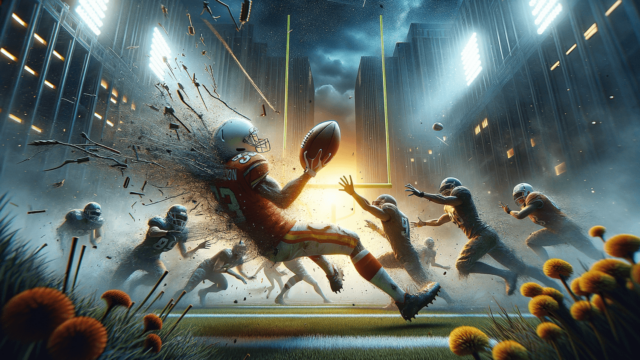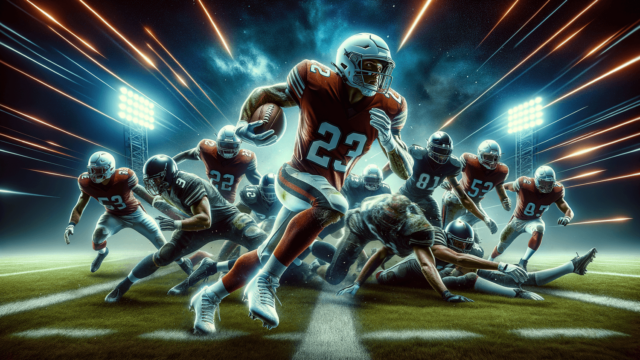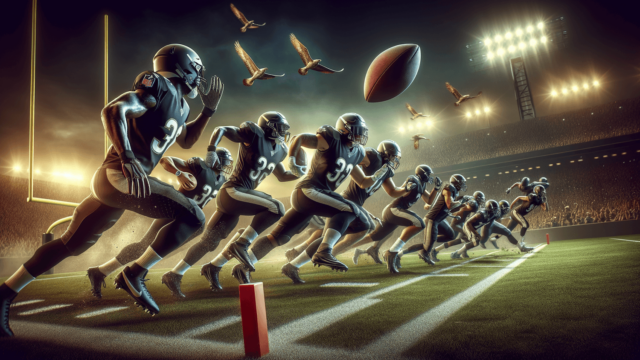
A foul in football is an action committed by a player that is deemed unfair or dangerous by the referee. This includes tripping, pushing, holding, or striking an opponent, as well as reckless tackles, use of excessive force, and impeding an opponent’s progress. Fouls result in the awarding of a free kick or penalty kick to the opposing team.
Understanding Fouls in Football
Fouls are an integral part of the game of football, as they help maintain a fair and competitive environment. In this article, we explore the main types of fouls, the consequences that follow, and how they influence the game.
Types of Fouls
Physical Fouls
Physical fouls consist of actions that involve contact with an opponent and are carried out with unfair intent or excessive aggression. These include:
- Tripping
- Pushing
- Holding
- Striking
- Jumping at an opponent
Tackling Fouls
Tackling is a crucial defensive aspect of football, but it is considered a foul under these circumstances:
- Reckless tackle
- Use of excessive force
- Slide tackle from behind
Non-physical Fouls
Non-physical fouls are acts that don’t involve contact but still break the rules of the game. They include:
- Impeding an opponent’s progress
- Handball
Consequences of Fouls
Free Kicks and Penalty Kicks
When a player commits a foul, the opposing team is awarded a free kick or penalty kick, depending on the location of the offense.
Disciplinary Action
A player may also receive a:
- Yellow card (caution) for reckless play or persistent fouling
- Red card (dismissal) for serious foul play, violent conduct, or receiving two yellow cards in a single match
How Fouls Impact the Game
Fouls are a strategic aspect of football, as they can disrupt an opponent’s flow and break up dangerous plays. However, committing excessive fouls can result in disciplinary action, ultimately leading to disadvantages for the offending team such as numerical inferiority and suspension of key players.
Understanding Advantage Rule
Occasionally, referees may apply the advantage rule during a match. This rule allows play to continue after a foul if stopping the game would disrupt an advantageous situation for the team that was fouled. The referee indicates this by extending both arms forward. Once the advantage is played, the referee can still choose to discipline the offender if the foul committed was cautionable or sending-off worthy.
Offside Foul
Offside is another important foul that contributes to the tactical dimension of football. Although not a direct foul, it is a violation of the game’s rules. A player is considered offside if they are nearer to the opponents’ goal line than the ball and the second-to-last opponent (usually the last outfield player) when their teammate plays the ball to them, and they are actively involved in the play. The result of an offside call is an indirect free kick awarded to the opposing team from the spot of the infringement.
Accidental Fouls
Not all fouls are committed intentionally. Accidental fouls can happen during play, such as unintentional handballs or collisions between players. In these cases, the referee decides whether the action is significant enough to warrant a free kick based on their observation and interpretation of the situation.
Studying Opponent’s Foul Tendencies
Part of football’s tactical element is understanding an opponent’s tendencies with regard to fouling. Coaches and players analyze the way their rivals commit fouls to exploit weaknesses or to prepare for a highly aggressive game. By studying these patterns, teams can adapt their strategies to counter their opponents’ aggressive behavior, making the match safer and more enjoyable for all involved.
FAQ Section: Common Questions About Football Fouls
After reading about fouls in football, you may have some questions about certain aspects and how they affect the game. Here are answers to five common questions related to the topic that can broaden your understanding.
What happens if a goalkeeper commits a foul inside their own penalty area?
If a goalkeeper commits a foul inside their own penalty area, the opposing team is awarded a penalty kick. The penalty spot is located 12 yards (11 meters) from the goal line, and only the goalkeeper and the kicker are allowed in the penalty area during the kick.
Can a player be cautioned or sent off even if the referee plays the advantage after a foul?
Yes, a player can still be cautioned (yellow card) or sent off (red card) even after the referee plays the advantage rule. After the advantage has been played, the referee can stop the game to take disciplinary action if the foul committed was cautionable or sending-off worthy.
What is an indirect free kick?
An indirect free kick is awarded to the opposing team when a non-penal offense is committed, such as offside, dangerous play or obstruction. Unlike direct free kicks, players cannot score directly from an indirect free kick. The ball must touch another player, from either team, before entering the goal to be counted as a valid goal.
How does a referee indicate the difference between a direct and indirect free kick?
The referee indicates an indirect free kick by raising their non-whistle arm straight up over their head and keeping it raised until the next stoppage in play or when the ball is touched by another player. For direct free kicks, the referee does not raise their arm, and the player taking the kick can aim for the goal directly.
Can fouls be reviewed using Video Assistant Referee (VAR) technology?
Yes, fouls can be reviewed using Video Assistant Referee (VAR) technology. VAR can be used to review specific decisions related to goals, penalty decisions, direct red card incidents, and mistaken identity situations. Referees can consult the VAR team to verify key decisions or conduct an on-field review using the pitchside monitor for more clarity.
Featured Posts
- No pillar pages found.





